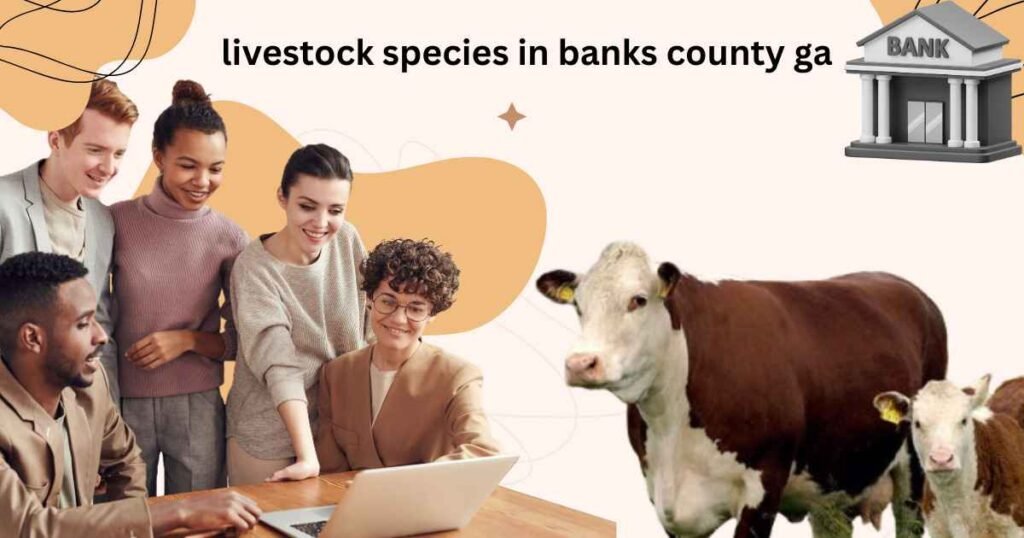The local setting of Banks County truly corresponds to this rural and agricultural appealing of an area. Rich in pastures, with hilly landscape and a climate suitable for agriculture the county has been prevalent for stock farming. Out of all the livestock species reared in the region, cattle are the most important and numerous species and are therefore highlighted below. This is so because the economic returns associated with production from such areas, the climate and the local customs are all favourable.
In the entirety of this article, we aim to look at why cattle farming reigns supreme in Banks County, our focus will involve historical development, economic impact, and the future with particular focus on the various challenges facing the industry, but more so a detailed look at the agricultural prospects in Banks Country
Banks County’s Agricultural Identity
Banks County is located in the northeastern part of Georgia and is well driven by agriculture. While more than 60% of the land is being used for farming, the region is particular about livestock farming. It is therefore not just a business proposition when people rear animals here; it is a culture. Although other types of livestock such as poultry, pigs and goats are also reared, the scene is predominantly dominated by cattle especially in numbers that occupy space and the economy.
Why Cattle?
- Economic Value: Cattle, both for beef and dairy, generate a substantial portion of Banks County’s agricultural income.
- Environmental Suitability: The temperate climate and fertile soil make the county an ideal location for grazing and raising cattle.
- Cultural Legacy: Cattle farming has been a tradition in the area for generations, passed down through families.
A Historical Perspective on Livestock Farming in Banks County
The origins of cattle farming in Banks County go back to the early nineteenth century when newly arrived farmers saw the land as favorable to cattle-raising. At one time, the local farmers practiced shifting cultivation with emphasis on cultivation of food crops but with the emergence of large pastures in the area the farmers mainly concentrated on rearing of cattle to meet the market demands of meat especially beef and milk products.
SWOT Analysis: Conversion from Livestock herding to Commercial Cattle Production
•Early 20th Century: Subsistence cattle farming started giving way to commercial farming among local farmers. There were increased formation of local markets and developments of transports such as railways to enable farmers to market the products beyond the county.
•Post-War Era: New tools and implements in farming changed the size of many farmers’ herds and productivity after the second world war.
•Modern Day: Nowadays, Banks County is listed as one of the concerned participants in the cattle farming business, and has its share in supporting Georgia’s agricultural production.
The Prominence of Cattle in Banks County
Statistical Evidence
The latest agricultural rReports support that cattle are listed among the many livestock species in Banks County that has many in number and contributes most in the income generating aspect.• The county’s total livestock population includes notably a number of cattle and calves.• In gross farm income, the beef industry tops the livestock industry which other sectors in livestock such as poultry and swine.ulation and revenue. According to data from the USDA and Georgia’s Farm Gate Value Report:
•Cattle and calves account for a significant percentage of the county’s total livestock population.
•The beef industry leads in terms of gross farm income, outpacing other livestock sectors like poultry and swine.
All these disparities spur the need to compare the goat with other livestock species Comparison with Other Livestock
Although poultry farming is another type of farming found in Georgia it is not as predominant in Banks County as it is in other counties.• More continent available for pasturing.• A favourable market in terms of consumption of beef, as well as dairy foods.• Compared to industrial scale poultry farming the costs of barriers to entry are relatively low.ock species in Banks County in terms of population and revenue. According to data from the USDA and Georgia’s Farm Gate Value Report:
•Cattle and calves account for a significant percentage of the county’s total livestock population.
•The beef industry leads in terms of gross farm income, outpacing other livestock sectors like poultry and swine.
Comparisons with Other Livestock
While poultry farming is also prevalent in Georgia, it does not dominate in Banks County as it does in other parts of the state. Instead, cattle farming thrives due to:
• Greater land availability for grazing.
• A strong market for both beef and dairy products.
• Lower barriers to entry compared to industrial-scale poultry farming.

The Economic Impact of Cattle Farming
Cattle farming is not just a dominant agricultural practice but also a critical economic driver for Banks County.
Contributions to Local Economy
1. Revenue Generation: Cattle farming is thus a source of millions of dollars of income each year.
2. Employment: This industry is an employer of labor; it employs farm workers, animal health care personnel, feed producers, and transporters.
3. Ancillary Industries: Equipment companies, fencing contractors or veterinary services benefiting from such industries are likely to gain considerably from the cattle industries.
Local Markets and Distribution
Banks County farmers sell their cattle through:
• Local Auctions: Farmers are affordable prices when it comes to regional auctions of livestock.
• Direct-to-Consumer Sales: Today, some cattle producers sell their grass-finished beef to local consumers because there is an increasing need for organic and healthy meat
Why Banks County is Ideal for Cattle Farming
The natural landscape and climate of Banks County are tailor-made for cattle farming.
Environmental Factors
1. Fertile Pastures: The land morphology consists of roller coaster feeding on forage such as clover and Bermuda grass because of soil fertility.
2. Temperate Climate: Mild climate and good rainfall encourage pasture growth making the region support grazing throughout the year.
3. Water Resources: It means that rivers and streams give a constant water source for all livestock.
Technological Advancements
Local farmers are adopting modern techniques to maximize production efficiency:
- Automated feeding systems.
- Genetic improvement through selective breeding.
- Drones for monitoring large herds.
Popular Cattle Breeds in Banks County
Banks County farmers prefer breeds suited to local climate conditions as well as those market demands in their region. The most common breeds include:
• Angus: Known for high-quality beef.
• Hereford: Climate resistant and flexible to change.
• Charolais: Favored for their fast growth, leanness and taste, Breams are ideal from fingerlings.
• Holstein: Popular for dairy production.
They are selected purposefully depending on the objectives of farming and depending on whether the breeder wants beef, milk or to adapt to some climate.

Challenges in Cattle Farming
Despite its prominence, cattle farming in Banks County faces several challenges.
Market Volatility
Fluctuating prices for beef and dairy products can impact farmers’ profitability.
Rising Costs
The increasing cost of feed, veterinary care, and equipment poses a financial strain, particularly on small-scale farmers.
Environmental Concerns
- Overgrazing can lead to soil degradation.
- Water pollution from runoff is a growing issue.
- Balancing productivity with sustainability remains a challenge.
Sustainable Practices in Cattle Farming
To address these challenges, many farmers in Banks County are adopting sustainable practices:
- Rotational Grazing: Prevents overgrazing and improves pasture health.
- Water Management: Farmers are implementing measures to reduce runoff and protect water sources.
- Eco-Friendly Feed: Some farms are experimenting with alternative feeds to reduce methane emissions.
Support for Farmers
Local Organizations
The Banks County Cattlemen’s Association provides resources, networking opportunities, and advocacy for local farmers.
Statewide Initiatives
Georgia’s Cattlemen’s Association and agricultural extension services offer workshops, grants, and educational programs to promote best practices in cattle farming.
The Future of Cattle Farming in Banks County
The United States remains among the world’s largest consumers of beef and dairy products; therefore, Banks County farmers stand ready for business expansion.• On going technological advancement in farming practices.• Increased spent on research and development.• Risk diversification as the main approach that the organizations can use to counterbalance the volatility of the market.are well-positioned to expand their operations. However, the future will require:
• Continued innovation in farming practices.
• Greater emphasis on sustainability.
• Diversification to mitigate risks associated with market volatility.
Conclusion
Undoubtedly, cattle are the highest livestock species to have been reported in Banks County, Georgia. The relevance of these trees is anchored on the history, geography and economic value of the region. While farmers are up for challenges and adapting to change, the cattle enterprise will continue to be among the critical components of Banks County farming for decades to come.
